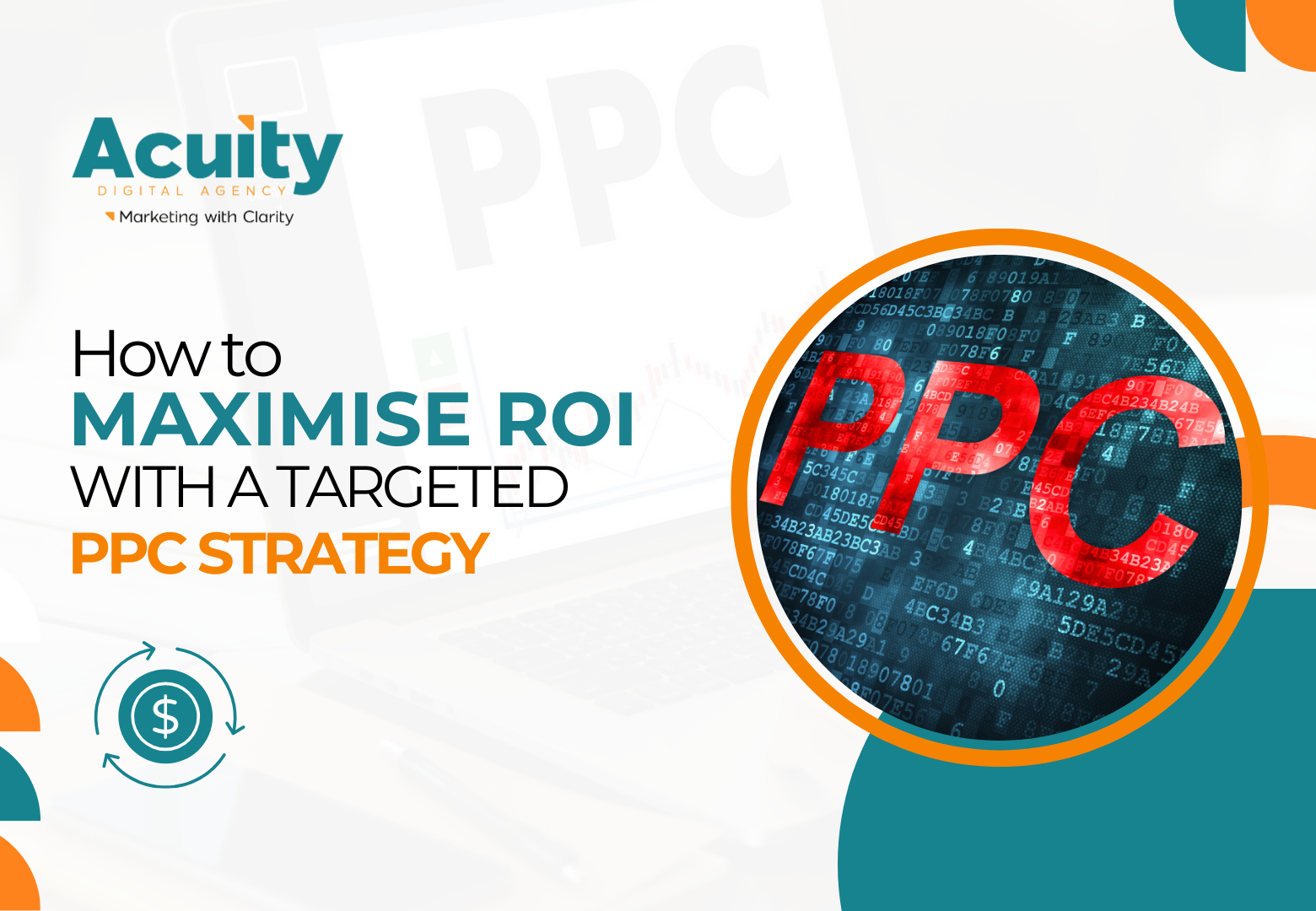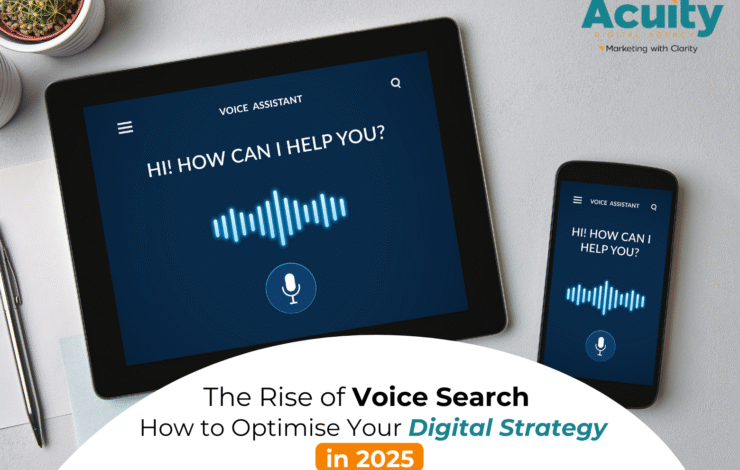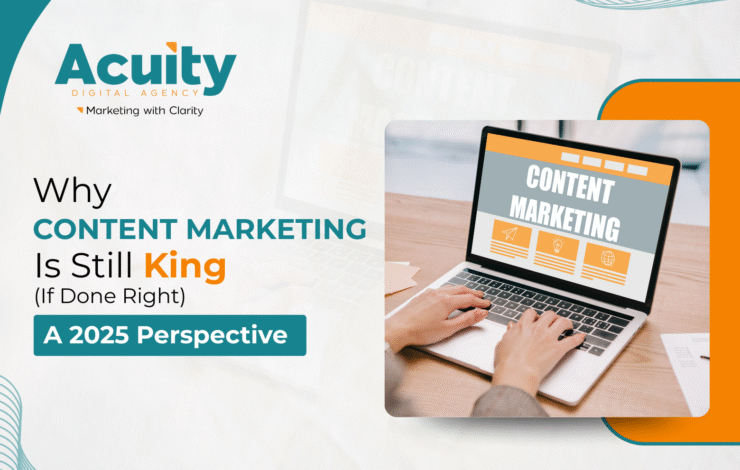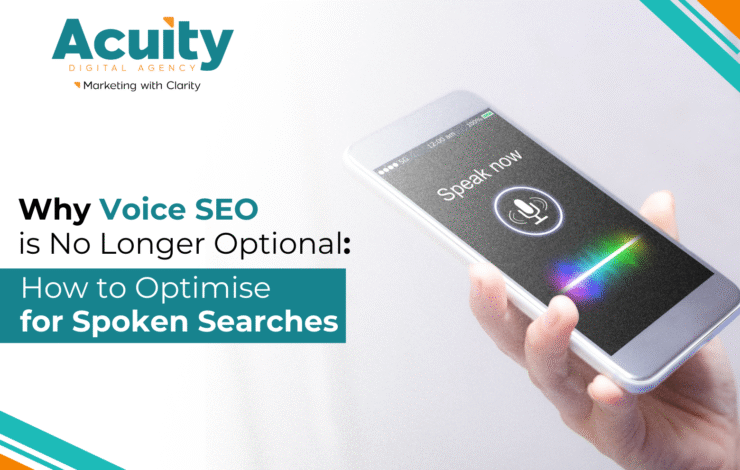Let’s face it, online ads can get expensive, fast. But when done right, Pay-Per-Click (PPC) advertising isn’t just about spending money, it’s about making more of it. The trick lies in how targeted your strategy is. And that’s where a lot of businesses miss the mark.
At Acuity Digital Services, we believe PPC should work smarter, not harder. Whether you’re a small local shop or a growing e-commerce brand, we help businesses make every click count. Here’s how you can start getting more value (and fewer headaches) from your PPC campaigns.
What Does a “Targeted” PPC Strategy Actually Mean?
Think of a targeted PPC strategy like using a magnifying glass instead of a flashlight, you’re not just trying to be seen by everyone, you’re focusing on the people who matter most.
It’s about:
- Showing your ads in the right locations
- Reaching the right age group or interest category
- Picking keywords that match real intent
- Timing your ads to appear when people are actually looking
Basically, it’s not about how many people see your ad, it’s who sees it.
Step One: Know What You Want (Seriously)
A lot of businesses jump into PPC thinking, “Let’s just get more traffic.” But traffic without a goal? That’s like throwing darts in the dark.
So ask yourself:
- Do I want leads? Sales? Just awareness?
- Am I trying to get more calls? App downloads?
Once you’re clear on your goal, everything else becomes easier to plan—from the type of ads you run to how you measure success.
Step Two: Understand Your Audience Like You Know Your Best Friend
Who are you trying to reach? Not just in terms of age and location but what are they searching for? What are they worried about? What makes them click?
The more detailed your understanding, the better you can:
- Choose keywords they actually use
- Write ad copy that feels personal
- Create offers that speak to their needs
The more your ad sounds like something they’d say or search for, the better it’ll perform.
Step Three: Be Smart About Keywords (Not Just Popular)
Here’s the truth: not all keywords are worth your money. Sure, “best running shoes” might get tons of searches but it’s also super competitive and expensive.
Instead, focus on keywords that show buying intent, like:
- “Buy waterproof running shoes online”
- “Running shoes free shipping India”
Also, don’t forget about match types:
- Exact match is super focused
- Phrase match is a good balance
- Broad match can be risky unless you layer it with audience targeting
And yes, negative keywords are your friend. They help you avoid wasting money on the wrong clicks.
Step Four: Make Your Ads Sound Like a Human, Not a Sales Bot
Nobody likes robotic, salesy ads. Instead of saying, “Shop shoes online,” try something like:
“Find your next favourite pair. Free delivery & easy returns.”
This feels like someone actually wrote it for you not for a machine.
Quick tips:
- Highlight benefits, not just features
- Use emotional or action-based language
- Always include a clear CTA like “Get Started” or “See Plans”
Step Five: Don’t Sleep on Your Landing Page
You got the click. Great. But what happens after?
If your landing page is slow, messy, or full of distractions, people will bounce. Make sure:
- It loads fast (especially on phones)
- The headline matches the ad
- There’s one clear action to take
Good landing pages = better conversion rates = more ROI.
Step Six: Use Google’s Smart Bidding, But Don’t Blindly Trust It
Yes, Google offers auto-bidding strategies like:
- Maximise conversions
- Target CPA
- Target ROAS
They can work well, but keep an eye on the data. Algorithms are helpful, but they’re not perfect. Sometimes, manual tweaks give you better control.
Step Seven: Track Everything—Yes, Everything
You can’t improve what you don’t measure. So make sure your tracking is rock solid. This includes:
- Setting up conversion goals in Google Ads
- Using Google Analytics to see user flow
- Measuring cost-per-click (CPC), cost-per-acquisition (CPA), and return on ad spend (ROAS)
Use these insights to keep what’s working and ditch what isn’t.
Step Eight: Always Be Testing (Because Nothing Is Ever “Done”)
PPC isn’t a one-time setup. It’s ongoing. Keep testing:
- Different headlines and descriptions
- New ad formats (like call-only or image ads)
- A/B landing page designs
- Location and device targeting
Sometimes, changing one word or headline can bump your CTR up by 20%.
Step Nine: Don’t Forget Retargeting
People rarely buy on their first visit. That’s where retargeting steps in. Remind past visitors of:
- What they viewed
- Why they liked it
- Why now’s the time to act
Retargeted ads are cheaper to run and more likely to convert.
In a Nutshell
PPC can give amazing returns but only if you run it with intent. A targeted strategy helps you:
- Spend less per conversion
- Get more leads or sales
- Improve brand recall
At Acuity Digital Services, we don’t believe in wasting your ad budget. We create custom, laser-focused PPC strategies that bring in real results, no fluff, no guesswork.
Ready to finally see your ad budget work harder for you? Contact Acuity Digital Services today and let’s start turning clicks into customers.





